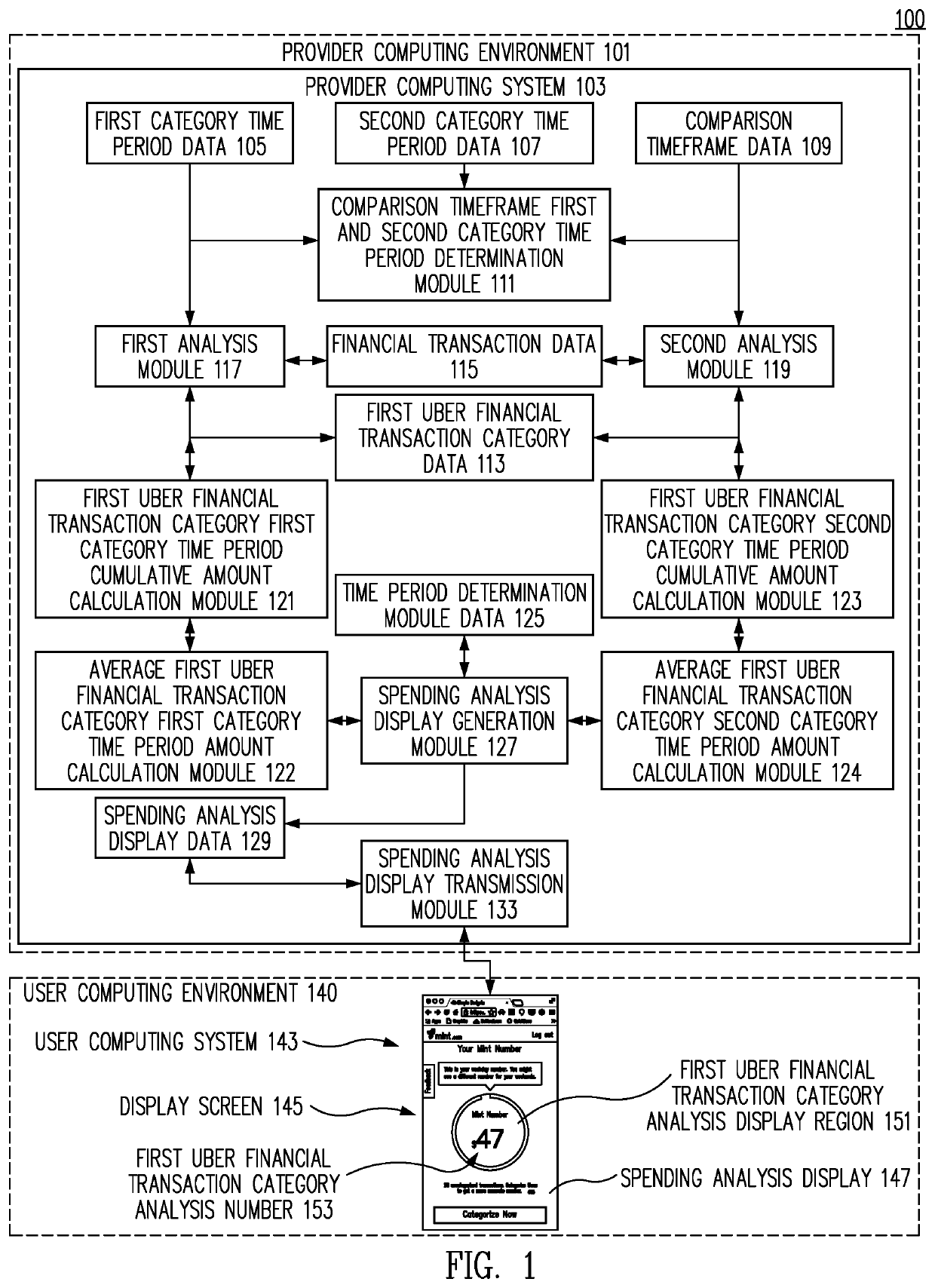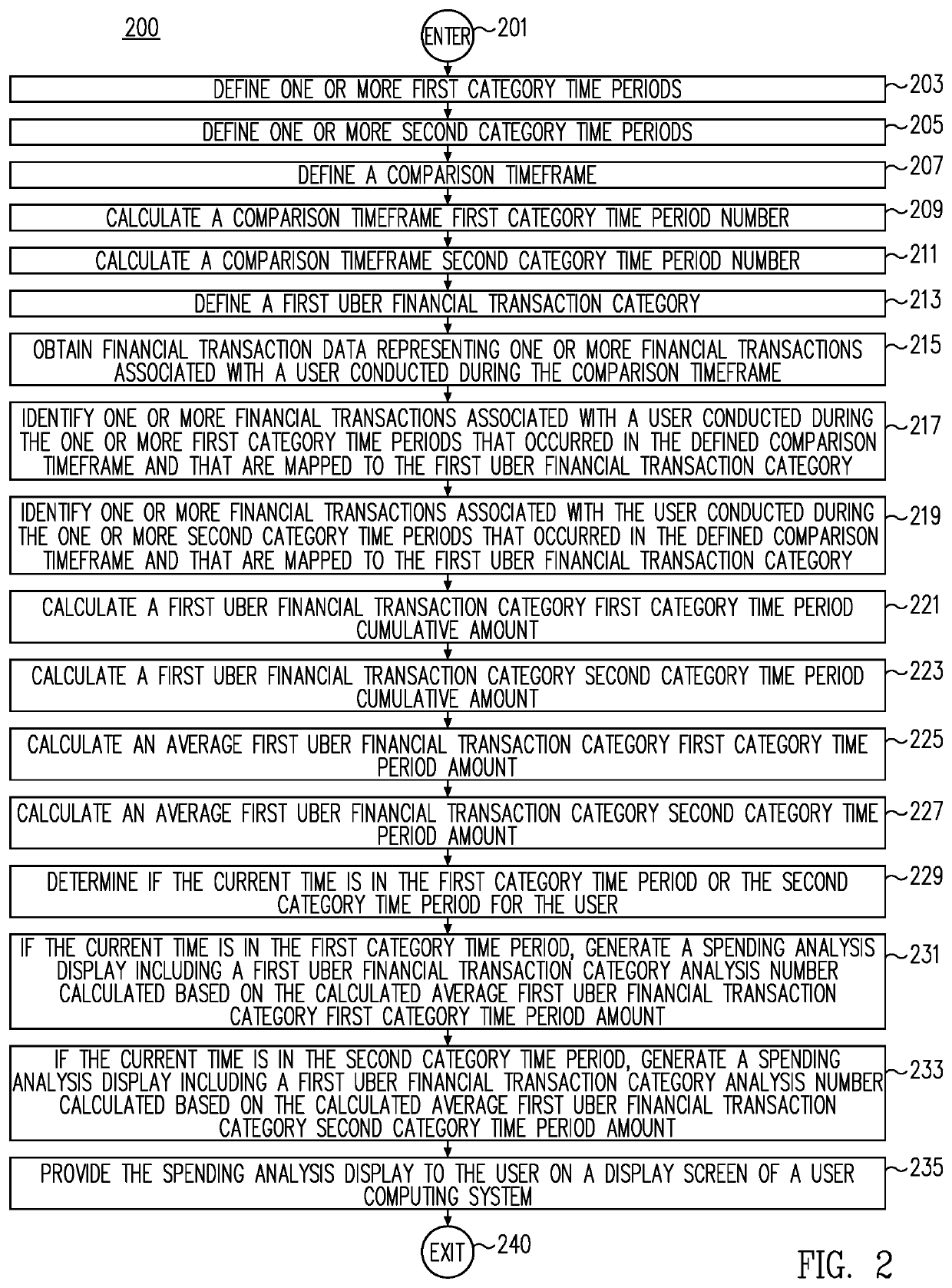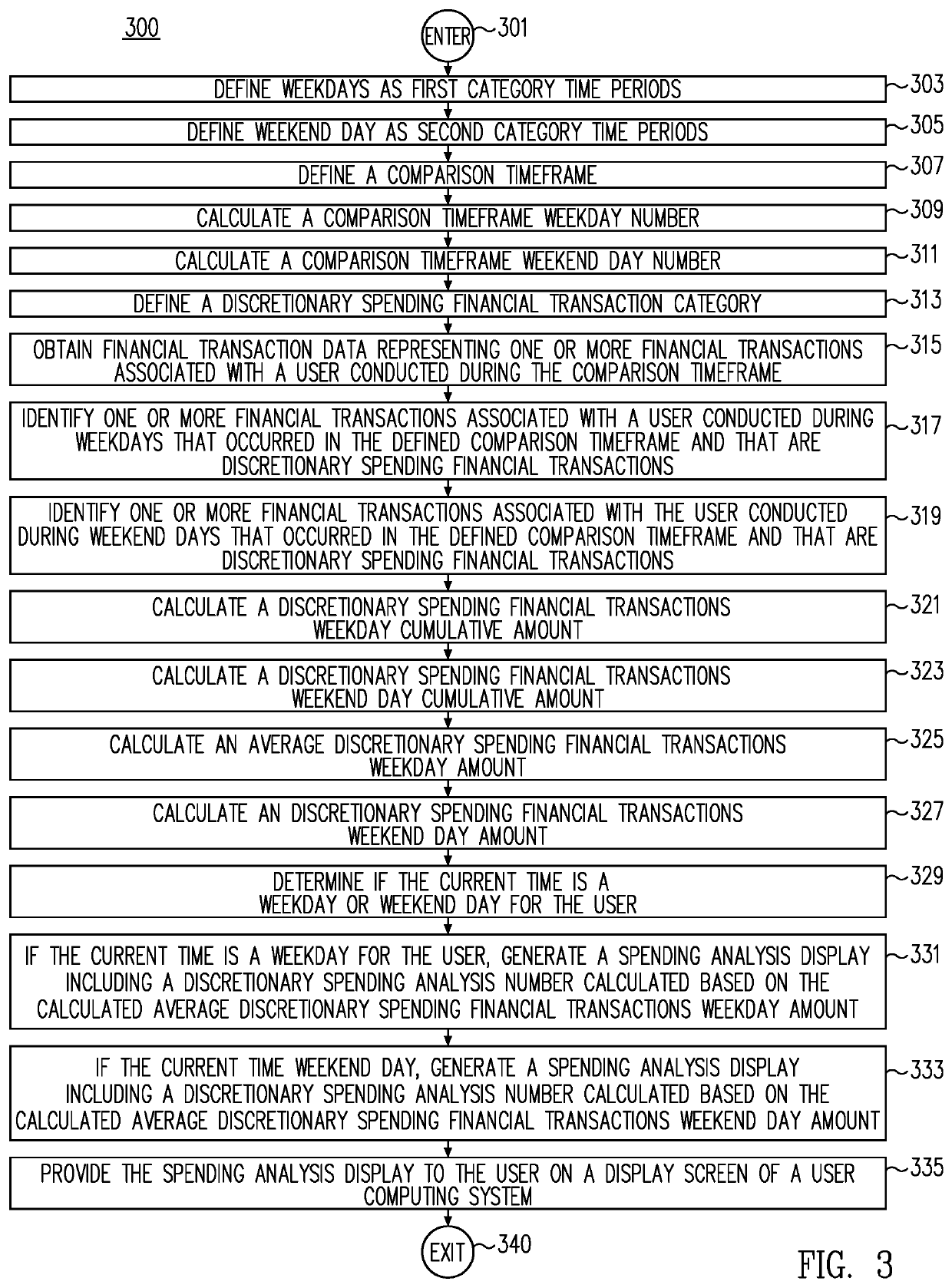However, it is often the case that the level of complexity, sophistication, and “
granularity” of the categorizations, analysis, and displays associated with traditional financial management systems actually provide a user too much information and require far more interaction and
mental analysis than the user actually wants to devote to managing their finances.
In addition to being overly complicated, data and reports generated by currently available financial management systems are often presented to the user in relatively static, and unengaging, reports and displays that provide little or no opportunity for user interaction with the data and / or user modification.
In addition, data and reports generated by currently available financial management systems often fail to take into account periodically repeating variations in user spending, and in particular, variations in user spending that naturally occur over the course of a day, a week, a month, a quarter, a year, or any defined period of time, based on the hours and days of the week the user works, seasonal employment and spending, and / or other particulars of an individual user's life and / or vocation that can cause periodically repeating variations in the user's spending.
Given this fact, it follows that currently available financial management systems do not provide simple,
user friendly, intuitive, and interactive spending analysis / tracking displays that are dynamically adjusted / adapted to the
current time period and periodically repeating variations in user spending.
As a specific illustrative example, currently available financial management systems do not provide simple,
user friendly, intuitive, and interactive spending analysis / tracking displays that take into account whether the
current time period is a weekday / work day or a weekend day / non-work day.
This is less than ideal given that most user's spending habits are quite different on weekdays / work days than on weekend days / non-work days.
This long standing problem in the technical fields of financial management,
data display, and user experience has at least five significant undesirable results.
First many users simply stop using the financial
management system because, as noted, the process does not engage the user, and many users do not know how, or do not want to devote the time and energy required, to obtain information that is meaningful to the user.
Second, using currently available financial management systems, in order to modify, or otherwise enter data associated with specific financial transactions, such as
categorization data, the user must often interact with multiple screens and enter data through a keyboard, or other
input device, that is often burdensome and difficult to use.
In addition, in a world rapidly becoming dominated by mobile systems, such as smart-phones, having to scroll through and interact with large amounts of often undesired
analysis data and categorizations to determine a user's recent spending history and habits is not only burdensome, but is actually prone to erroneous
data entry and analysis.
This is because while a “qwerty” keyboard can be made to fit in a space less than 2″ wide, that doesn't make it easy or efficient to use.
Consequently, not only is the user not actively engaged in the
categorization process, and / or required to analyze their spending situation, but the data displayed and processed by currently available financial management systems is often not up to date, or is incomplete.
Third, currently available financial management systems often employ a hundred or more financial transaction categories, often defined by other parties, such as the IRS, and therefore users lose track of which financial transactions represent controllable spending choices, and the consequences of those spending choices, in the “haystack” of financial transactions categorized in one of the hundred or more financial transaction categories that the user did not even define.
Fourth, the displays provided by currently available financial management systems typically are not relevant or intuitive and do not actively engage the user in the process of analyzing, and / or modifying their spending choices.
Therefore the user is not encouraged to become an active participate in understanding and controlling / modifying the user's spending choices.
Finally, as noted, currently available financial management systems fail to take into account periodically repeating variations in user spending, and in particular, variations in user spending that naturally occur over the course of a day, a week, a month, a quarter, a year, or any defined period of
time based on the hours and days of the week the user works, seasonal employment and spending, and / or other particulars of an individual user's life and career that can cause periodically repeating variations in user spending.
Given this fact, it follows that the displays provided by currently available financial management systems currently do not provide simple,
user friendly, intuitive, and interactive spending analysis / tracking displays that are dynamically adjusted / adapted to reflect periodically repeating variations in user spending.
The inability of prior art financial management systems to negotiate these technical hurdles has historically caused many consumers / users to lose track of their spending and to fail to recognize those spending habits they can change, and those that are largely not under their control.
In addition, by failing to provide simple, user friendly, intuitive, and interactive spending analysis / tracking displays that are dynamically adjusted / adapted to reflect periodically repeating variations in user spending, currently available financial management systems fail to place users on alert as to times when they are doing most of their discretionary spending, and to thereby help users control unwanted discretionary spending by making them aware of times when they need to be more sensitive to their spending.
As a result of the situation described above, both users and providers of financial management systems are currently detrimentally affected by this long standing problem in the technical fields of financial management,
data display, and user experience.
 Login to View More
Login to View More  Login to View More
Login to View More 


